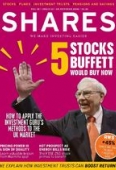Archived article
Please note that tax, investment, pension and ISA rules can change and the information and any views contained in this article may now be inaccurate.
BAE hits the bullseye on fattened military budgets

Global defence company BAE Systems (BA.) is a rare beast. It is one of the few stocks yielding more than 4% which also has a track record of consistent dividend growth.
Improving cash flow, a growing order book and recovering end markets are all reasons to be positive on the stock.
Clear opportunity
Military budgets are expanding amid rising global tensions connected to Russian aggression and Islamic State militants.
The UK Strategic Defence and Security Review in November 2015 reaffirmed a commitment to meet the NATO target of spending at least 2% of GDP on defence.
After several years of scaling back, NATO members across the board are on track to allocate more to defence in 2016 according to the organisation, with an overall increase estimated at about $3 billion.
There seems to be scope for budgets to grow further, with analysts at Credit Suisse recently noting European Union and US defence spending is 18% and 10% below its 20-year historical norm as a percentage of GDP.
In a 6 October 2016 trading update BAE noted: ‘In the US the defence market outlook remains positive and the production ramp up on a number of the group’s long term programmes is progressing to plan.’
Big cash flows
Investment bank Berenberg expects a 10-20% uplift in the £36.6bn order book by early next year. It claims revenue stability is provided by the fact ‘45% of BAE’s sales are from services and support, and 35% are from major programmes’.
Underpinning the dividend is a forecast improvement in cash flow as spending in certain areas, including on a new shipyard in San Diego, winds down.
Berenberg reckons free cash flow will increase from £303m in 2016 to £999m in 2017. That suggests a bigger pot from which to pay dividends to shareholders.
Despite this improving picture the company trades at a near 30% discount to the average forward price to earnings ratio of its US peers, according to Berenberg.
The main risk investors need to weigh is the pension deficit which is likely to have widened substantially from the previously reported £2.6bn at the next triennial valuation in April 2017.
The company has the option of smoothing deficit payments by extending the recovery plan from the current nine years to 12 or more. (TS)

A secure yield and improving trends are an attractive mix at 540p. Buy.
Important information:
These articles are provided by Shares magazine which is published by AJ Bell Media, a part of AJ Bell. Shares is not written by AJ Bell.
Shares is provided for your general information and use and is not a personal recommendation to invest. It is not intended to be relied upon by you in making or not making any investment decisions. The investments referred to in these articles will not be suitable for all investors. If in doubt please seek appropriate independent financial advice.
Investors acting on the information in these articles do so at their own risk and AJ Bell Media and its staff do not accept liability for losses suffered by investors as a result of their investment decisions.
 magazine
magazine









